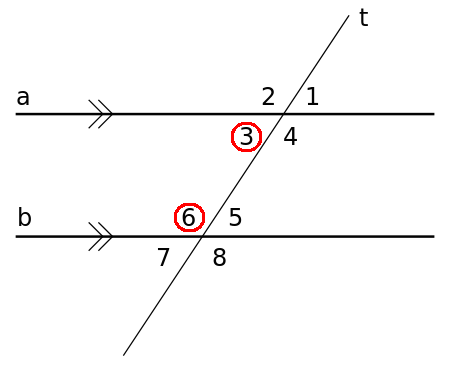

θ 2 and θ 3 are adjacent angles and their non-common sides are BO and OD, BO + OD = BD is a Straight Line so both are linear pairs of angles.θ 1 and θ 2 are adjacent angles and their non-common sides are AO and OC, AO + OC = AC is a Straight Line so both are linear pairs of angles.Now we see four angles are there let’s try to observe them one by one. Let’s call the intersection of line AC and BD to be O. Let’s see some examples for a better understanding of Pair of Angles. We say two angles as linear pairs of angles if both the angles are adjacent angles with an additional condition that their non-common side makes a Straight Line. Here θ 1 and θ 2 are having a common vertex, they share a common side but they overlap so they aren’t Adjacent Angles. Here θ 1 and θ 2 are having a common vertex, they don’t overlap but because they don’t share any common side they aren’t Adjacent Angles. Let’s see some of the examples where we might get confused that whether they are adjacent angles or not. We know what conditions two angles need to fulfill to be Adjacent angles. When we have two angles with a common side, a common vertex without any overlap we call them Adjacent Angles. If one angle is x°, its supplement is 180° – x°. If one angle is x°, its complement is 90° – x°. If we have one angle as x° then to find a supplementary angle we need to subtract it from 180°.Įxample: We have 60° then the supplementary angle of it is 180° – 60° which is 120° Difference Between Complementary Angle and Supplementary Angle Complementary Angleīoth the angles are called complements of each other.īoth the angles are called supplement of each other.If we have two angles as x° and y° and x° + y° = 180° then x is called the supplementary angle of y and y is called the supplementary angle of x.Įxample: We have 100° and 80° then, 100° is the supplementary angle of 80° and 80° supplementary angle of 100°.ISRO CS Syllabus for Scientist/Engineer Examīelow is the pictorial representation of the Supplementary Angle.ISRO CS Original Papers and Official Keys.GATE CS Original Papers and Official Keys.The angles that form a complementary angle and a supplementary angle are different, so they serve different purposes. The terms complementary and supplementary angles are related, but they are not the same. A complementary angle’s base makes a right angle, whereas a supplementary angle’s base makes a straight line.If the two complementary angles are equal, they make 45 ° each, whereas if the two supplementary angles are equal, they make 90 ° each.Complementary angles are both acute angles, i.e., they are both less than 90°, while supplementary angles have one acute and one obtuse angle, i.e., one is less than 90° and the other is more than 90°.The sum of two complementary angles is π/2, but the sum of two supplementary angles is π.When two complementary angles are added together, the sum is 90°, but when two supplementary angles are added together, the sum is 180°.Main Differences Between Complementary Angle and Supplementary Angle If two supplementary angles are placed adjacent to each other, the base of both the angles would be a straight line. Thus two supplementary angles can be equal only if they both measure 90°. If a supplementary angle is broken into two equal parts, we get two angles of 90° each. That is, one of them must be less than 90° while the other must be more than 90°. The base of supplementary angles makes a straight line. The base of the angles The base of complementary angles makes a right angle. If the two supplementary angles are equal, they are 90 ° each. Equal angles If the two complementary angles are equal, they are 45 ° each.

One angle is acute and the other is obtuse, i.e., one is less than 90° and the other is more than 90°.

Description of the angles Both the angles involved are acute, i.e., they are less than 90°. Sum of the angles in π The sum of the two included angles is π/2. The sum of the two included angles is 180°. Comparison Table Between Complementary Angle and Supplementary Angle Parameters of Comparison Complementary Angle Supplementary Angle Sum of the angles in degrees The sum of the two included angles is 90°. Straight angles are formed by joining supplementary angles together.įor example, if two angles measure 110° and 70° respectively, they can be regarded as supplementary angles because their sum equals 180°. Whenever the sum of two angles is exactly 180°, they are called supplementary angles.


 0 kommentar(er)
0 kommentar(er)
